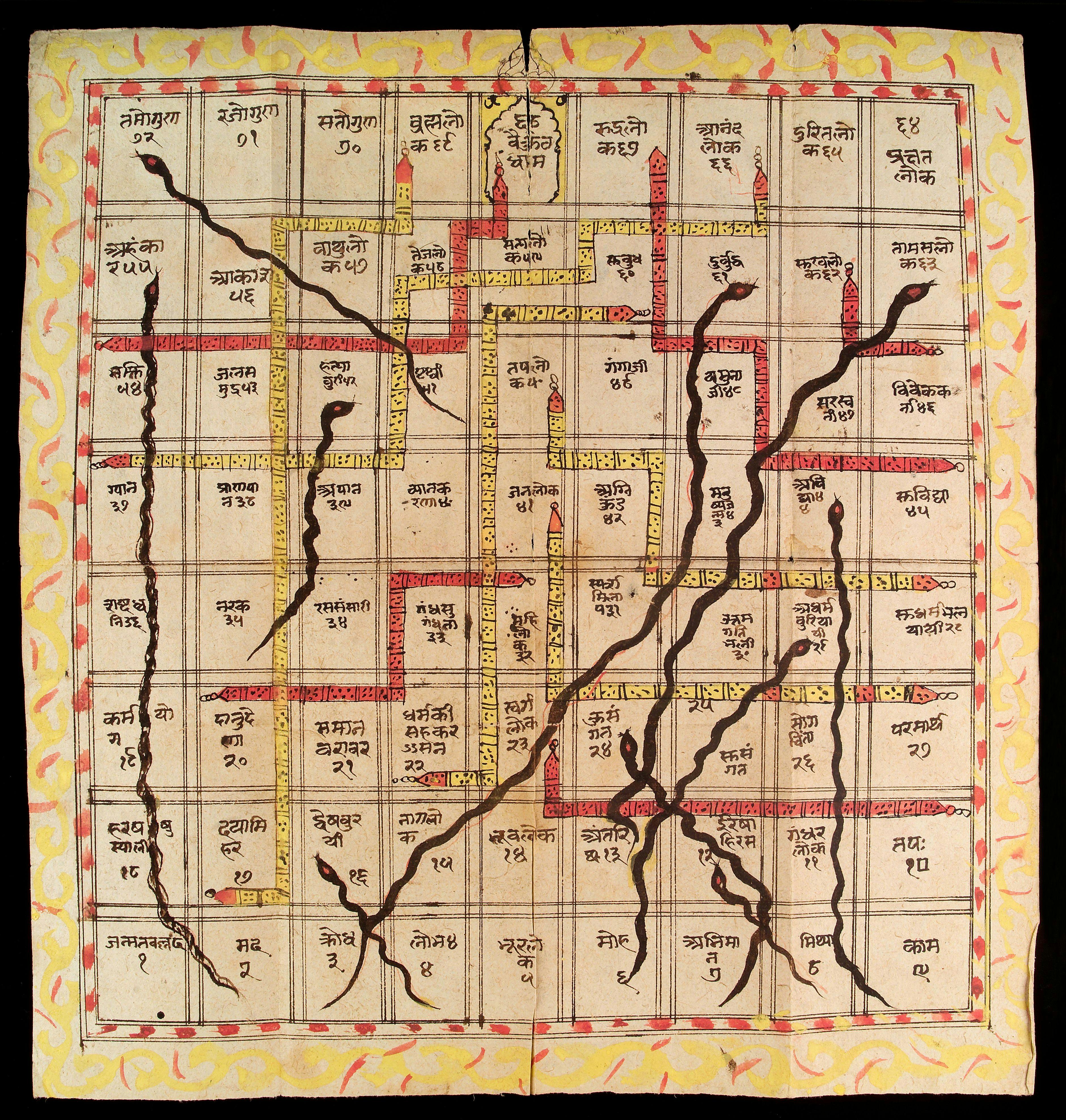Philosophy and Snakes & Ladders
BOOKMARK
Although now popular in its modern, westernized form as a kids’ game, did you know that Snakes & Ladders traces its roots to a traditional Indian board game based on religious philosophies? In the original, it served as a lesson in morality. Playing this game wasn’t just about winning or losing, but finding out how close you were, to heaven or hell.
– It is believed to have been invented by Jain monks to promote the concept of liberation
The history of Snakes & Ladders goes back around 1000 years to 10th century CE where it is believed to have been invented by Jain monks to promote the concept of liberation from the bondage of passions. The game was symbolic of a man’s journey in life and the design had a few similarities with the ancient Jain mandalas in which various squares were illustrated with the notions of karma and moksha.
As the monks travelled with the game, it acquired many regional names like Gyan Chaupar in northern India and Mokshapat around Maharashtra, along with Leela and Parampada Sopanapata. Meanwhile, there also developed other ‘philosophical’ variations - a Hindu and a very rare, Sufi Muslim version.
– The ladders represented virtues while the snakes represented vices
In the game, the ladders represented virtues such as faith, generosity, humility and asceticism while the snakes represented vices such as anger, theft, lust and greed. The last square represented either a God or heaven meaning you have attained liberation. The ladders conveyed that good deeds lead you to heaven and evil to a cycle of re-births. The number of ladders was less than the number of snakes, a reminder that the path of good is much more difficult to tread, than a path of sins.
In a nut-shell the game was meant to inspire players to introspect rather than compete with each other.
Interestingly, the reason the game pivoted around pure luck was because it was in keeping with the Jain philosophical notion - emphasizing the ideas of fate and destiny. This was in contrast to other ancient games such as Chaturanga which needed skill or Pachisi, which focused on a mixture of both.
– The Pahari style of the game could run up to 360 squares
Also, it is to be noted that unlike the 100 squares game that is ubiquitous with the Snakes & Ladder board game today, there wasn’t any standardization then. The most common types were 84-square Jain board, 101-square Sufi board and the 72 square Hindu (predominantly Vaishnav) board, followed by their expanded variants, which in Pahari style can run up to 360-squares.
Often made simply of painted cloth and sometimes on paper, few boards have survived from any earlier than the mid-18th century. The iconography on it depicts cosmological elements, with upper regions depicting divine beings and the heavens. The rest of the board was covered with pictures of animals, flowers and people.
The appeal of this game not only transcended religious boundaries but also geographical ones. When it was first brought to Victorian England in 1892 for instance, it was a big hit. Here it was customised to suit Christian sensibilities. The squares of fulfilment, grace and success were accessible by ladders of thrift and penitence and snakes of indulgence, disobedience and indolence caused one to end up in illness, disgrace and poverty. While the Indian version of the game had snakes outnumbering ladders, the English counterpart was more forgiving, as it contained each in the same amount. This concept of equality signifies the cultural ideal that for every sin one commits, there exists another chance at redemption.
In 1943, it was rebranded as Chutes and Ladders in the United States by game pioneer Milton Bradley. Over time, the game was simplified, stripped of moral lessons altogether and in its recent avatar, it came to be known as Snakes and Ladders.
This game serves as a perfect example of how even a simple game can evolve over time and space. In this case, also how a profound lesson in morality, became a game children play.
– ABOUT LIVE HISTORY INDIA










